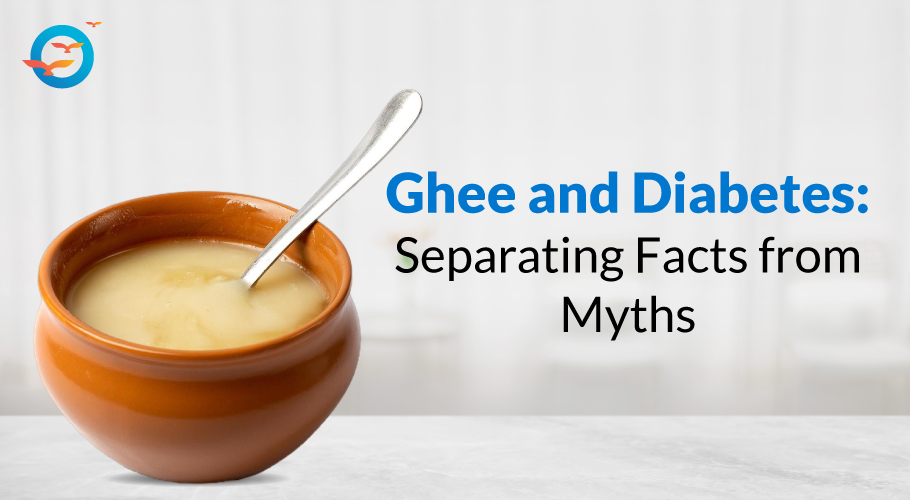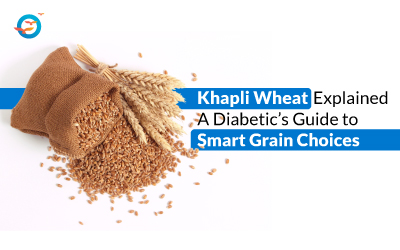Unveiling the Truth: Debunking Myths About Ghee and Diabetes

Can a diabetic patient eat ghee?
Ghee, or clarified butter, has long been a staple in Indian cuisine, celebrated for its rich flavor and numerous health benefits. However, with the rise in diabetes cases worldwide, many people question whether ghee is a friend or foe to those managing this condition.
In this blog, we will uncover the truth about ghee and diabetes, debunking common myths and highlighting its potential benefits.
Myth 1: Ghee Causes Weight Gain
Reality:
While ghee is high in fats, it doesn’t necessarily lead to weight gain when consumed in moderation. Ghee contains healthy fats, including short-chain and medium-chain fatty acids, which can aid in weight management by promoting satiety and reducing overall calorie intake.
Including a small amount of ghee in a balanced diet can actually support weight loss efforts.
Myth 2: Ghee Raises Blood Sugar Levels
Reality:
Ghee itself does not contain carbohydrates or sugars, meaning it does not directly impact blood sugar levels. When included as part of a balanced diet, ghee can help stabilize blood sugar levels by providing a source of sustained energy and reducing the glycemic load of meals.
Combining ghee with high-fiber foods, proteins, and vegetables can further aid in maintaining stable blood glucose levels.
Myth 3: Ghee is Bad for Heart Health
Reality:
The relationship between ghee and heart health is more nuanced. While ghee is high in saturated fats, it also contains conjugated linoleic acid (CLA) and butyrate, which have been shown to have anti-inflammatory and heart-protective properties.
Moderate consumption of ghee, especially when replacing unhealthy trans fats and refined oils, can contribute to better heart health. It’s important to note that overconsumption of any fat can be harmful, so portion control is key.
Myth 4: Ghee Lacks Nutritional Value
Reality:
Ghee is rich in fat-soluble vitamins such as A, D, E, and K, which are essential for various bodily functions, including;
- Vision
- Immunity
- Bone health
- Antioxidant protection
It also contains butyric acid, a short-chain fatty acid that supports gut health and has anti-inflammatory properties. Ghee's high smoke point makes it a safer option for cooking at high temperatures, preserving its nutritional value.
Myth 5: Ghee Should Be Avoided by Diabetics
Reality:
Ghee can be a beneficial addition to a diabetic diet when consumed in moderation. It enhances the flavor of foods, making healthy eating more enjoyable, and its fat content can help slow the absorption of carbohydrates, preventing rapid spikes in blood sugar levels.
Ghee also aids in the absorption of fat-soluble vitamins and antioxidants from other foods, contributing to overall health and well-being.
How to Include Ghee in a Diabetic Diet
-
Use Moderately:
Stick to recommended serving sizes. A teaspoon or two per meal is usually sufficient.
-
Cook with Ghee:
Use ghee for sautéing vegetables, cooking lean meats, or adding a finishing touch to soups and stews. Its high smoke point makes it ideal for these purposes.
-
Combine with Fiber and Protein:
Pair ghee with high-fiber foods like whole grains, legumes, and vegetables, and with proteins such as lean meats, eggs, and dairy, to balance your meals.
-
Avoid Overindulgence:
As with any fat, consuming too much ghee can lead to excessive calorie intake. Balance it with other healthy fats like olive oil, nuts, and seeds.
-
Consumption
A) Consumption of ghee with meals or just before meals can help in reducing sugar spikes post meals.
B) Usage of ghee made from A2 cow milk by bilona method (using fermented cream and churning) is more beneficial.
-
Moisturizing/Anti-aging effect
Topical application of ghee on dry skin serves as a great moisturizer and anti ageing agent as it help reduce wrinkles.
Conclusion
Ghee, when used appropriately, can be a valuable part of a diabetic diet. Its rich nutrient profile, potential health benefits, and culinary versatility make it a beneficial addition to many meals. By debunking these myths, we can appreciate ghee for its true value and enjoy it as part of a balanced and health-conscious lifestyle.
Always consult with your healthcare provider or a dietitian to tailor dietary choices to your individual health needs and conditions.
Embrace the goodness of ghee while managing diabetes effectively!

